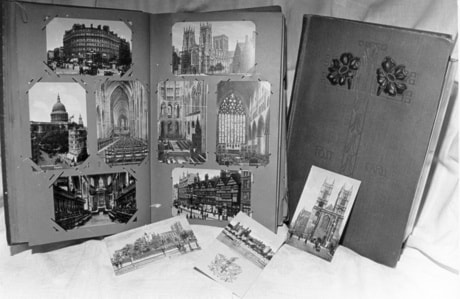People collect for a variety of reasons, with many different objectives.
When I was seven years old, I started to collect pins, as a class project. The pins had either been gathered from family vacations, were random treasures found around the house or from local shops. I displayed the pins on a cork board, in a haphazard fashion, no real rhyme nor reason, based primarily on size and colour.
I can recall a classmate’s project of the same variety, but the pins all had categories and were neatly displayed with title cards. They had given a story to the collection without really trying. As time passed, I still collected pins to add to my collection, but I started to doubt my process and presentation. I began to think twice before buying; where did this fit? Would it need a new category? Would it enhance my collection?
I soon realized this approach was not for me. It had turned my recreational hobby into more of a chore. There is no rule that says every collector must form an important collection. In fact, I think the more interesting story lies in the undefined collections. What did my original pin collection say about me?
And more importantly, what will the objects we leave behind say about us?
Whenever I’m tasked with putting together a new exhibition at the Maple Ridge Museum, sometimes the easiest way to go about it is to look at the collection in terms of numbers. What do we have a lot of that would fill a space, but also tell a good story?
For instance, our camera collection at the museum boasts more than 100 different cameras, dating back to the 1880s. Most of them were from resident Jack Craig, who took on the recreational hobby of photography in the 1930s, and later turned it into a professional career. This collection showcases the whole scope, from cameras to wooden frames for developing the pictures.
Certainly, a wide scope helps tell a great story. Yet, what about a watch and chain, made of horsehair attached to a small framed lithographed picture of a young girl? This is the type of object that makes even us at the museum raise an eyebrow, but also intrigues us.
The object in question was part of a collection, in that it came into the museum from the same anonymous donor in 1986, alongside a slew of household goods and other personal effects ranging from kitchen utensils to saw setting guides. No story attached.
How as a curator do I create a story? It’s like solving a puzzle, knowing nothing of the object’s history, I must look at what’s right in front of me and work back. Often times that story can be just as engaging as having all of the information.
The most priceless coin collection with great scope can be as meaningful as something unchosen, left behind by its owner and picked up by someone else. Nearly all of our biggest collections have little curiosities.
This year we’ve processed the estate of Marge Saunders, which provided us with her archery equipment, countless medals, and made a huge addition to our photography and camera collection. Yet perhaps the most intriguing part of her estate? A collection of handmade Royal Family scrapbooks. Humourous, yes, but it also gives us a little more back-story to the person than a piece of equipment ever could.
If the contents of your nightstand ended up in a shoebox, in our museum, would there be a story to draw from?
Allison White is the curator at Maple Ridge Museum.
